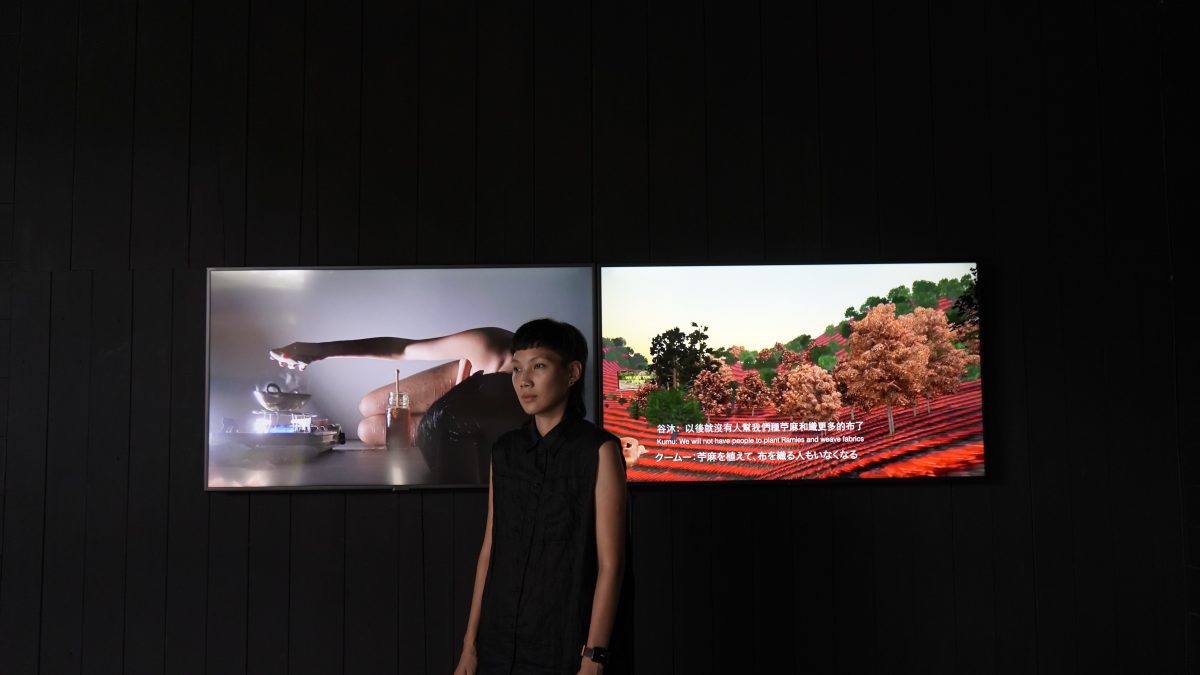2023 Humus. Taipei Museum of Contemporary Art. Taipei.
2023 In-Dialoue: Balancing Between Indigeneity and Modernity. Vancouver Art Gallery. Canada. (Performance)
2022 Persistence / Resistance: Taiwan and Canada Indigenous Art Exhibition. Tainan Fine Art Museum. Tainan.
2022 Wagiwagi – Greeting to Nature. documenta 15. Indonesia, Germany.
2022 Perceiving Nature. Hsinchu City Art Gallery. Hsinchu.
2022 Tides in Bodies. Solid Art Gallery. Taipei 2022 mgluw tuqiy na Temahahoi / Finding Pathways to Temahahoi. Artspace Aotearoa. New Zealand.
2022 2057:Rehearsing Ways of Living. Experimental Theatre – National Theater & National Concert Hall. Taipei, Taiwan. (Performance)
2021 Phantasmapolis – 2021 Asia Art Biennale. National Taiwan Museum of Fine Arts. Taichung.
2023 Guest Curator, Watering Intimacy – Asia Discover Asia Meeting Artist Lab. Taipei Performing Art Center, Taipei, Taiwan.
2022 Guest Curator, Landing – Asia Discover Asia Meeting Artist Lab. Taipei Performing Art Center, Taipei, Taiwan.
Name of artworks : Finding Pathways to Temahahoi – Artwork series
Media : double-channel HD video/sound script on paper Single-channel HD Video ceramic ocarina instrument
Year : 2020-2023
Finding Pathways to Temahahoi explores the Atayal oral story of Temahahoi, through performance, cyberspace, and moving image, in a series of artworks connected through multimedia installation. The artworks engage with Ciwas’s journey to reconnect to the place of Temahahoi. A place deep in the forest, where only women live and flourish by communicating with bees. At the same time, the story is interpreted as a queer space for future connections to build inclusive community and sustainable relationships with the land in a climate of disconnection and displacement. The body of work engages with environmental issues, particularly the plight of bees, by intertwining the bond between quiet queer bodies and imbalanced ecology.
This double-channel video work weaves together three distinct narratives to re-examine queerness, gender, oral history, and displacement from land lost. The first oral story connects the relationship between bees and the land in the telling of the place of Temahahoi. This story is fused with Ciwas’s personal queer journey. A third historical narrative tells how colonialgifted brass pots caused infertility among the Atayal people.
This work engages Ciwas’s desire to have a sense of place and connect to her ancestral land, to pin forward towards a queer “cultural landscape”, inspired by Net Art, as an online cloud space using the web address https://raxal-mu.glitch.me (raxal mu – my land). This Internet space expands cultural knowledge and queer connections beyond the soil into the cloud.
Pswagi Temahahoi explores further the possibility of the place of Temahahoi by combining documentary video work alongside visual and sound performance to weave together a hybrid video installation piece. In Atayal language, “P” is future tense, “S” is the instrumental case indicating a tangible or intangible tool and “wagi” means sun or sisters in some Atayal regions. The documentary thread follows the path taken by Atayal Elder Yumin, who uses the technique “pswagi”, the Indigenous knowledge of sunlight and shade to trace the locations of wild bees. Alongside, a performance piece with a selfinvented and assembled ceramic instrument as a sound wayfinding tool to connect to the queer space of Temahahoi

